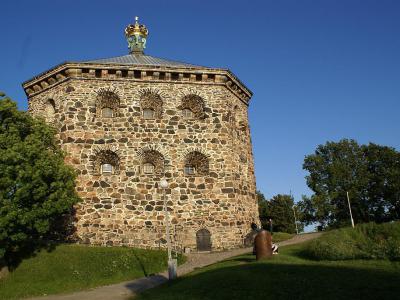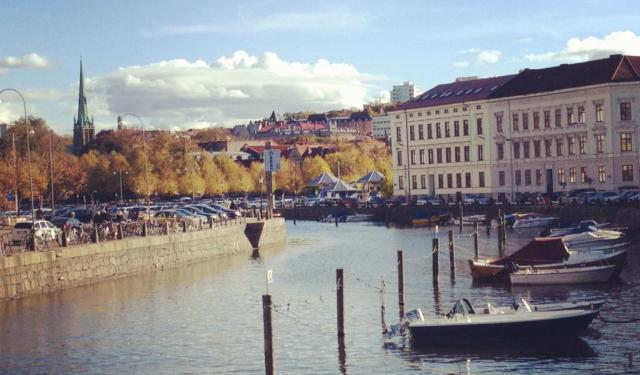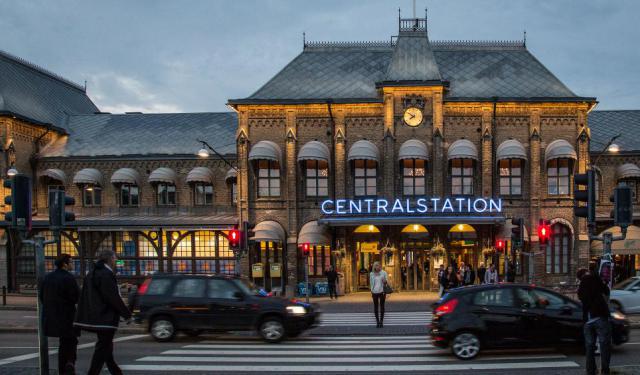Skansen Kronan (Crown Sconce), Gothenburg
The Crown Sconce (Skansen Kronan) stands in the Haga district of Gothenburg. It, along with its counterpart Skansen Lejonet, was constructed to defend Gothenburg from potential Danish attacks, similar to the purpose of the nearby sea fort, New Älvsborg.
Gothenburg was established in 1621 and fortified with an impressive system of defenses. However, military strategists were concerned about two hills, Gullberg and Risåsberg, overlooking the city. To counter this vulnerability, forts were built atop both hills. Designed by Erik Dahlbergh, the Crown Sconce sits atop Risåsberg while Skansen Lejonet occupies Gullberg.
Construction on Crown Sconce began in 1687, officially completed in 1698 with 23 guns installed, though the roof wasn't finished until 1700. Its formidable walls, made of granite, gneiss, and diabase, measure 4-5 meters thick. Despite its readiness, the fortress never faced attack, and its cannons remained silent.
In the early 1900s, the decision was made to repurpose the fortress as a military museum, which opened in November 1904. The museum closed in September 2004, transferring its collections to the Museum of Gothenburg. The Crown Sconce received protected status as a listed building in 1935.
Originally outside the city walls, the Crown Sconce is now nestled within the urban fabric of Haga in Gothenburg's west-central area. Today, it's privately owned and serves as a venue for conferences and private events. Beyond its historical significance, the old fortress provides panoramic views of the city.
Gothenburg was established in 1621 and fortified with an impressive system of defenses. However, military strategists were concerned about two hills, Gullberg and Risåsberg, overlooking the city. To counter this vulnerability, forts were built atop both hills. Designed by Erik Dahlbergh, the Crown Sconce sits atop Risåsberg while Skansen Lejonet occupies Gullberg.
Construction on Crown Sconce began in 1687, officially completed in 1698 with 23 guns installed, though the roof wasn't finished until 1700. Its formidable walls, made of granite, gneiss, and diabase, measure 4-5 meters thick. Despite its readiness, the fortress never faced attack, and its cannons remained silent.
In the early 1900s, the decision was made to repurpose the fortress as a military museum, which opened in November 1904. The museum closed in September 2004, transferring its collections to the Museum of Gothenburg. The Crown Sconce received protected status as a listed building in 1935.
Originally outside the city walls, the Crown Sconce is now nestled within the urban fabric of Haga in Gothenburg's west-central area. Today, it's privately owned and serves as a venue for conferences and private events. Beyond its historical significance, the old fortress provides panoramic views of the city.
Want to visit this sight? Check out these Self-Guided Walking Tours in Gothenburg. Alternatively, you can download the mobile app "GPSmyCity: Walks in 1K+ Cities" from Apple App Store or Google Play Store. The app turns your mobile device to a personal tour guide and it works offline, so no data plan is needed when traveling abroad.
Skansen Kronan (Crown Sconce) on Map
Sight Name: Skansen Kronan (Crown Sconce)
Sight Location: Gothenburg, Sweden (See walking tours in Gothenburg)
Sight Type: Attraction/Landmark
Guide(s) Containing This Sight:
Sight Location: Gothenburg, Sweden (See walking tours in Gothenburg)
Sight Type: Attraction/Landmark
Guide(s) Containing This Sight:
Walking Tours in Gothenburg, Sweden
Create Your Own Walk in Gothenburg
Creating your own self-guided walk in Gothenburg is easy and fun. Choose the city attractions that you want to see and a walk route map will be created just for you. You can even set your hotel as the start point of the walk.
Gothenburg Introduction Walking Tour
Gothenburg is Sweden’s second-largest city. Its river-side location has been vital in its development from a trading colony to a modern, vibrant city. Today, Gothenburg is known for its culture, fabulous cuisine, and international flair.
Gothenburg was founded in 1621 by King Gustavus Adolphus. The king gave generous tax cuts to Dutch allies and encouraged German and Scottish residents to... view more
Tour Duration: 2 Hour(s)
Travel Distance: 2.7 Km or 1.7 Miles
Gothenburg was founded in 1621 by King Gustavus Adolphus. The king gave generous tax cuts to Dutch allies and encouraged German and Scottish residents to... view more
Tour Duration: 2 Hour(s)
Travel Distance: 2.7 Km or 1.7 Miles
Historical Buildings Walking Tour
Like the majority of Swedish cities, Gothenburg is constantly re-inventing itself whilst continuing to celebrate its past. The latter is no more evident than in the city’s stunning historic architecture, manifested in a wonderful collection of stately old buildings, carefully preserved amid the relatively new ones.
Gothenburg’s architecture comes in a wide range of styles, from Gothic to... view more
Tour Duration: 2 Hour(s)
Travel Distance: 3.3 Km or 2.1 Miles
Gothenburg’s architecture comes in a wide range of styles, from Gothic to... view more
Tour Duration: 2 Hour(s)
Travel Distance: 3.3 Km or 2.1 Miles





